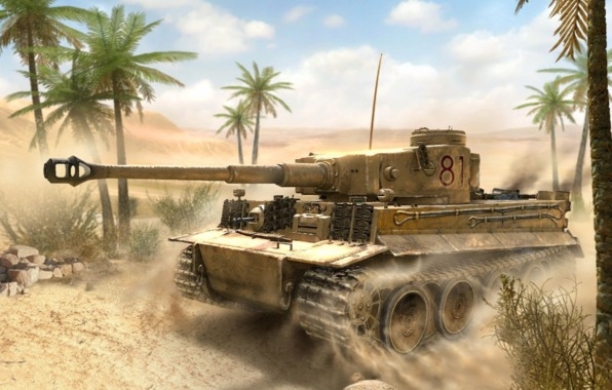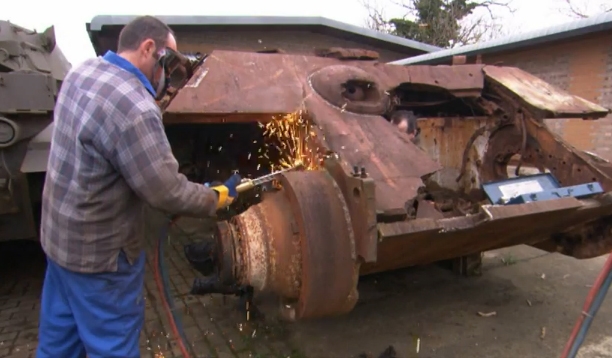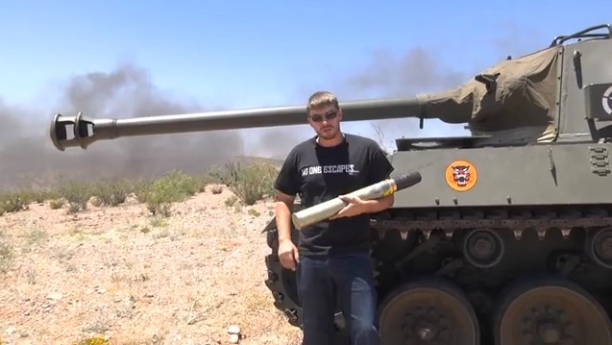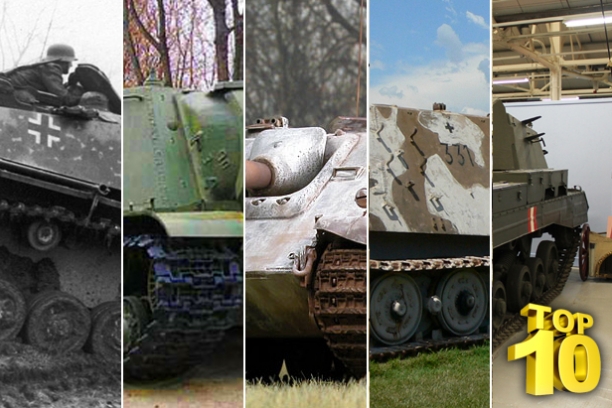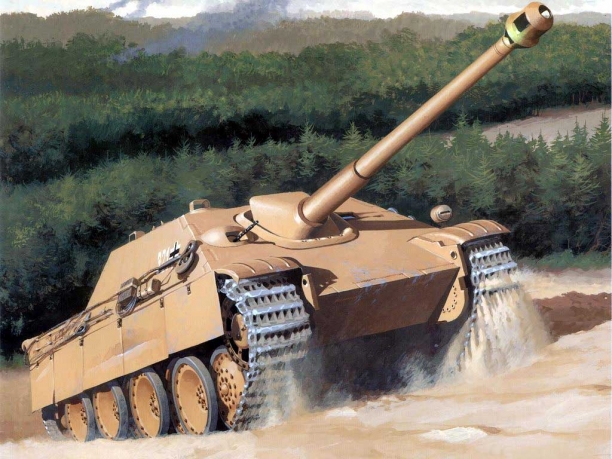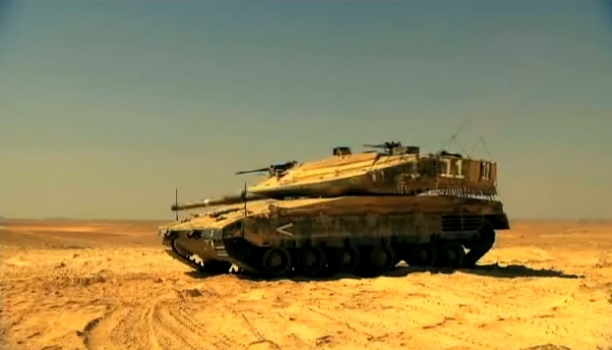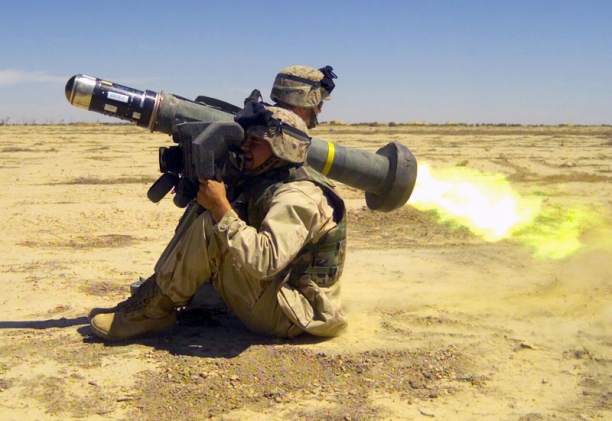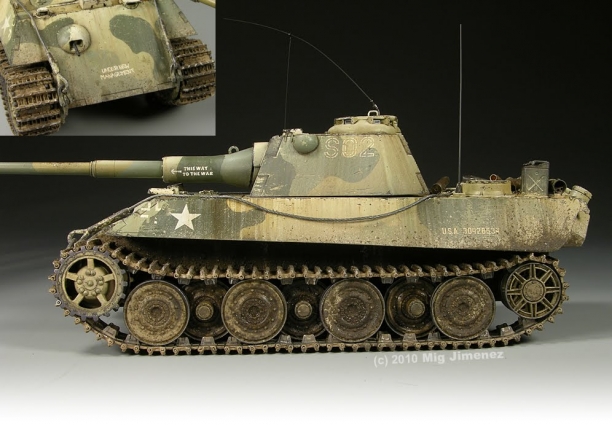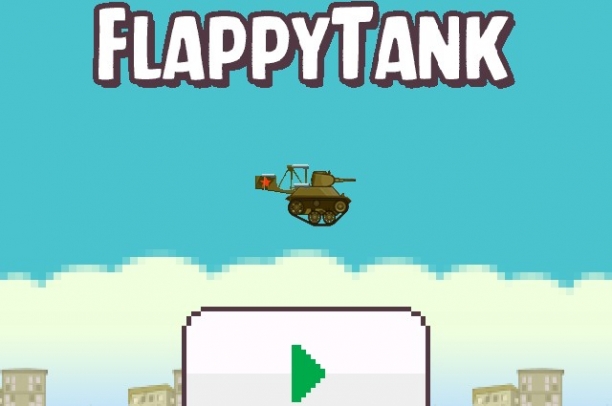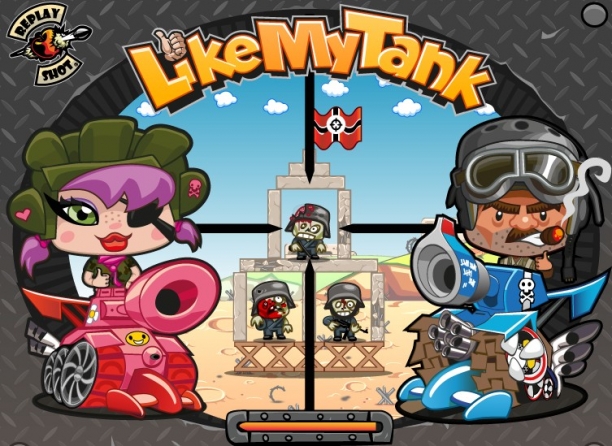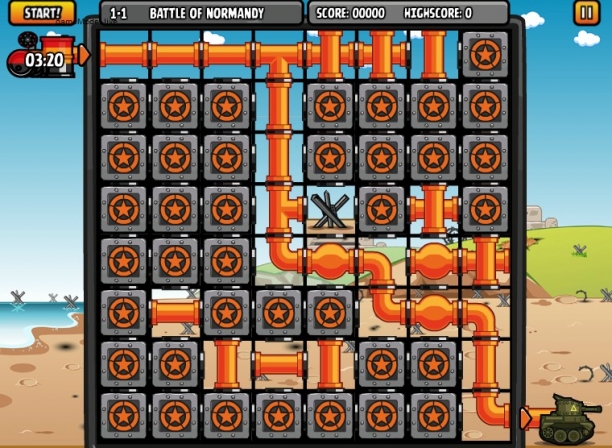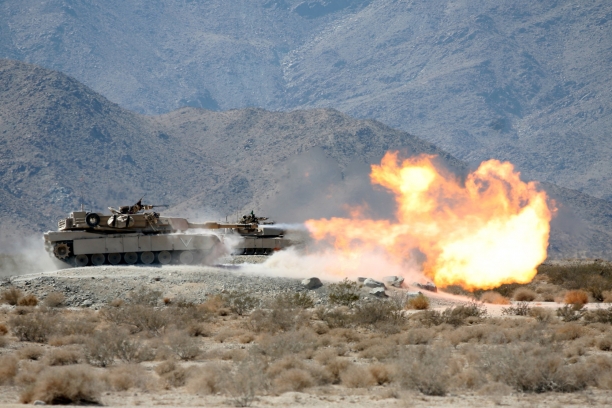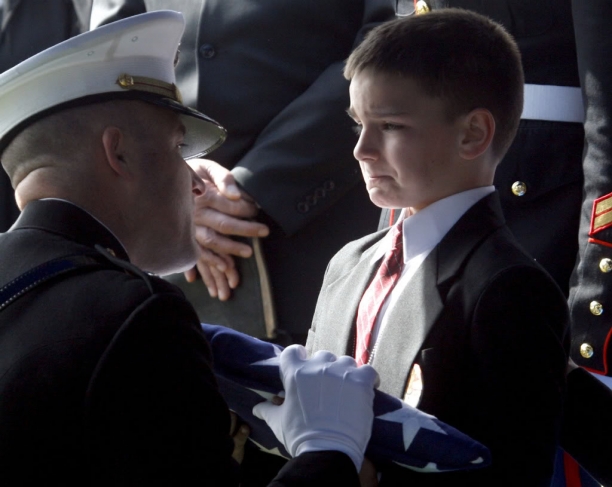This Nazi heavy tank built in 1942 which was used during World War 2 was called Tiger I. The ultimate formal German name was Panzerkampfwagen VI Tiger Ausf.E, oftentimes called Tiger for short. It was a response to a remarkable T-34 and the KV-1 which were part of the Soviet armor during the first months of encounter prior to the invasion of Soviet Union. Tiger was developed to counter and combat Soviet armors.
The design of Tiger I provided The Wehrmacht (refers to the German armed forces of WW II) their first tank mounting the 88 mm gun in its first version called the KwK 36. This gun was the primary weapon of Tiger I. It also showed its high effectiveness both on air and ground targets. The Tiger I was the combat fighting tank used during World War II on all German battlefronts. It was proven to be strong and tough and generally positioned in independent tank battalions.
What do you think?
|
Generally, tanks from US military forces are good in tactical and strategic mobility, have spot on accuracy and one of the fastest rate of fire. They are oftentimes the most effective and can destroy the bulk of their enemy within minutes. The defect and weakness of these tanks, however, is the insufficient and inadequate side and rear structure of the armor which is subject to troop harm and loss.
|
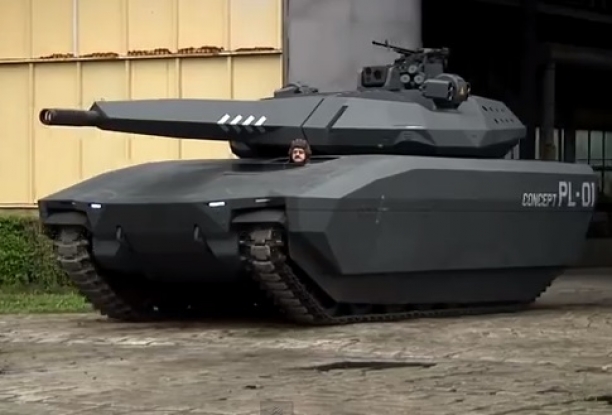
Tank PL-01 idea invented by Polish businesses and a large English company. The tank has a unique look and can be completely changed around to fit the user's preference.
Tank and men
The tank is not a heavy construction that has a goal of fighting other vehicles in combat. The PL-01 lets 3 crew to be seated inside the vehicle, which allows for more armor against outside threats like explosives and mines. It has a new age, ceramic armor that has many different layers.
New hybrid
The tank will use steel or rubber tracks to move along the ground, with a drive that is powered by an engine that is a hybrid. The vehicle can drive at fast speeds wherever it pleases. It can easily go through water as well.
Lots of firing options
The tower has modules, and it allows for a mount that has an auto ammo feed system located on the backside of the tower. It also has a machine gun and a selection of weapons that can be controlled by remote, plus a larger calibre rifle and a grenade launcher.
It is both ready to fight at night and during the day. It lets the drivers observe enemies during the day and night. There will also be an auto detection system for missiles and for partnered forces. Everything will be connected to one system which will be the head behind the guns.
This is one of the most powerful tanks out there. The Polish tank PL-01 will begin being manufactured near 2020.
|
Tank Overhaul is a place where hobbyists get together to share their knowledge of technology to put some of the amazing tanks of our time back together again. You can watch both a German and an American tank go from parts to their stunning glory again as they are reconstructed.
They are currently working on putting a Panther tank back together again. It was actually found at the bottom of a river in Poland and it won't be easy for these professionals to put it back together again. By reconstructing the tank, they are able to take a glimpse into history and better understand the events of WWI.
|
During World War II the M18 Hellcat was the tank used by the Americans to destroy the enemies and a defense against their foes. This armored fighting vehicle has speed up to 60 mph for the reason that the armor is paper thin or not more than 1" thick. It was the fastest tank destroyer in the time of World War II. The enemies were not able to attack the Hellcat troops easily because of the high speed of the tank.
|
The T 34 Soviet medium tank was first used in 1940 and had a very large influence on the ways that tanks are designed. It has been talked about as one of the best tanks that was used during the Second World War. It had the best balance as an overall tank, but it wasn't designed to hold the passengers very well, didn't have radios, and performed tactics poorly. That being said, it had guns that made it a fierce adversary for the time. The three inch machine gun was by far the best tank gun at that time. The armor also made it hard to destroy by other tanks. German military officials called it one of the fiercest tanks on the field of battle.
|
Most of the German and Russian weapons that were used to destroy tanks during the Second World War didn't have turrets, but some of the English and American weapons did. Most of the tank destroyers had the same size gun that tanks had, but at a less expensive cost. These tank destroyers did their job well against tanks, but when it came to going up against soldiers on foot they were very ineffective. Below you'll find a list of the top ten tank destroyers in the world. They have been scored based on how well their armor protects them, speed, the power of the main gun, and their experience on the field of battle.
|
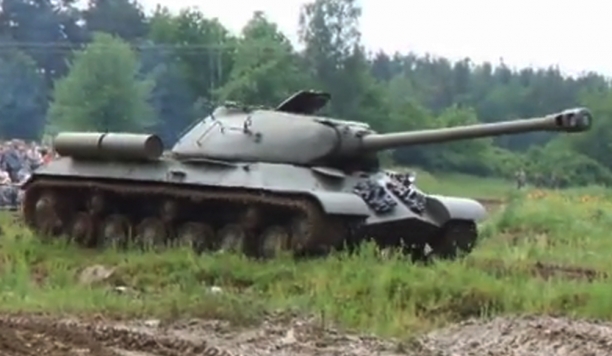
The IS-3 or the Iosef Stalin (Joseph Stalin) IS3 was part of a series of tanks that served Soviet Army during the WWII. The whole series was based upon the KV tanks and began with the IS-1 that was produced in the year 1943. The IS-2 came next during the very same year. The IS-2 came fitted with the 122, main gun - a lethal weapon indeed. The IS-3 was developed afterwards because the Soviets were convinced of its value.
The IS-3 modifications were a re-design of the whole series. For instance, the armor protection of the IS-3 is the best of the lot. This tank has better turret armor protection than its predecessors and is thus a safer machine to operate overall. The armor of the whole series was already a stand out. There were other modifications made on the turret. It was well-rounded and there was more space for the turret crew. Additional projectiles were also given ample space. For better protection from ballistics, the glacis plate had increased slope. The combined modifications on the turret and hull resulted in a lowered silhouette. This made the tank more difficult to track and target from any given angle.
The chief armament of the IS-3 was the 122mm (121.9mm). This was infamous during the war for its excellent penetration capacity and the flexibility that came with it. Expert crew can let off from 2-3 rounds every minute. The projectile choices were expanded as well to include 10 AP or armor-piercing rounds. In addition, there were 18 HE or high-explosive fragmentation. The IS-3 was capable of facilitating battlefield targets.
In October, 1944 the IS-3 prototype was designated as "Object 703." After a very short while and a series of evaluations this was approved for production. Factories in the Soviet Union capable of constructing heavy vehicles were soon busy with construction. The very first operational IS-3 tanks were entered into the inventory of the Soviet Red Army on May, 1945. The IS-3 appeared in the victory parade through the city of Berlin on 7th of September, however, it did not see much action at the front because the war in Europe was mostly over. Adolf Hitler had taken his life and the German capital has fallen under the control of the Soviet Army. Only a few pockets of the German war machine were still continuing the fight, so not much left to deal with.
But it was different in the Pacific because the Soviets were still fighting against Japan. It was said that an IS-3 regiment was deployed in August 1945 in the Far East (mission unknown). By the end of that month the Japanese empire would surrender signaling the end of the war in the Pacific and WWII.
At the time that the Second World War ended, the IS-3 was the most advanced war vehicle of its kind. The Soviets continued producing the IS-3 until mid-1946. About 2,311 units were completed. All the IS-3s in existence were inventoried by the Red Army. The tanks were in the Soviet stockades (it's allies as well) during the years of the Cold War. Even the Western powers had their eye on the IS-3 especially because this tank was a key influence in Soviet tank design in the twenty years that followed.
The IS-3 has a distinctively stout, low-set profile with a curved turret. Somehow its appearance recalls that of an upside-down frying pan. The rifled barrel is long with muzzle break that is double-baffled. The side track on either side has 6 road wheels. The drive sprocket is aft with 3 track return rollers and the idler is held in forward position. The rear compartment is where the V2-IS engine is located while the turret is forward. The heavy chassis was powered by the 520 horsepower engine capable of a top speed of 25 mph. Its range is 115 miles. The IS-3 weighs about 45.77 tons, was 32 feet, 4 inches long and eight feet high. It can be operated by four personnel.
The entire tank body was protected by 20mm - 230mm thick armor which would make it nine inches at the thickest areas. Aside from the armor, the IS-3 was equipped with the D-25T series main gun (121.9mm) and was formidable indeed. Enemy forces loathed attacking it from the front. Its primary weapons were 28 rounds of projectiles (122mm). The secondary armament was a 12.7mm anti-aircraft machine gun which carried 250 rounds. The IS-3 also had one to two 7.62mm anti-infantry machine guns which carried 756 rounds.
The IS-3's design was a step forward in a number of areas. However, it was still beset with mechanical problems much like other heavy tanks of that size. With regard to its operational abilities, the power pack was very unreliable. The transmission systems and engine were both prone to failure. These defects as well as a few matters concerning the hull were possibly due to the speed by which the Soviets pushed for its design & production. It is therefore not surprising that quality control problems would arise. Because of these limitations, a set of upgrades were done, intended to improve certain areas. Some of the improvements made were on the clutch mechanism, road wheels, and new radio equipment. The improvements added to the total weight of the tank by four tons and this additional burden hampered the IS-3's performance a bit.
The Red Army made good use of the IS-3 from the late 1940s until well into the '50s. During the Cold war, the tank underwent a modernization scheme that helped maintain its relevance. After all, its initial design was meant for the World War 2 stage and the Cold War was very different. A number of modern thoroughbreds eventually succeeded the IS-3 and this formidable war machine was soon retired to the history books. Nevertheless, before her time was ended, the IS-3 served a few foreign armies. Egypt was known to favor the IS-3 and even showcased the tank on parades as seen in 1956. The Israeli military captured a few units and these were reconstituted for use of the IDF. The IDF retrofitted the IS-3 with engines from the T54 tanks. The modification improved the performance level for the IDF and gave it a more modern feel. After China's part in the Korean War, this Communist nation also received IS-3 deliveries. The IS-3 was also used as a trainer for new Soviet tanker models before it was taken to storage. The Soviets maintained the IS-3's designation as the most dominant tank in the whole world. Few war vehicles could dispute this distinction.
|

The Leopard 2 is a tank which was developed for the German Army in the early '70s by Krauss-Maffei. It was the successor of the Leopard 1 and soon became the German Army's chief battle tank. The Leopard 2 was first put into service in the year 1979. Aside from Germany this tank came into service in 12 countries in Europe and even some non-European nations sought after it, so there is no wonder around 3,480 Leopard 2 tanks were manufactured in total. In the battlefield, the Leopard 2 made its debut when the German Army brought it to the battlefields of Kosovo. The contingents from Canada and Denmark brought their own Leopard 2s in Afghanistan as part of the International Security Assistance Force.
This tank saw two batches of development. The original models (until Leopard 2A4) had a turret armor that was vertically oriented. The improved models or the Leopard 2A5 on the other hand (along with the versions that followed) boasted of a turret appliqué armor that was angled and arrow shaped. Other improvements were made to the newer batches as well. All of these tank versions were equipped with laser range-finders, digital fire control systems, advanced night vision equipment, thermal imaging (later on) as well as coaxial machine gun & fully stabilized main gun. The upgraded sighting equipment is worth mentioning since it made the tank the very first vehicle to utilize an LLLTV or low-light level TV system. This tank was designed to engage any moving target while in motion over rough terrain.
|
The Jagdpanther or Hunting Panther was a Nazi tank destroyer made by the Germans and used during the later stages of World War II in 1944. The Jagdpanther saw battle in both the Western and Eastern fronts. This tank was based on the Panther tank chassis, and combined with the Tiger II PaK 43 cannon (8.8 cm) it was a formidable fighting machine. The suspension and armor of the Panther tank nevertheless suffered because of Germany's sorry state in the latter part of the war. There was a shortage of parts, poorly trained crew and dwindling production.
|
The Merkava IV is an Israeli tank that transports soldiers at high speeds, and it's main goal is to keep the men inside alive. The tank has a new way of firing. The armor is removable on all sides, including the top and bottom of the tank.
The Mark IV has a big 120 mm turret and can shoot more types of ammunition than previous models using an electric semi-automatic revolving magazine for ten shots. It also has a much larger machine gun (>12mm) to fight against vehicles.
|
Take a look at these guys punishing their enemies. Which one do you like the best ?
Let us know
|
Men love their toys. These are "big boy toys" that have tons of power and a lot of horse power, having 1000 under the hood.
That being said, which one is better?
Our guys wanted to know so they went out to where the army trains in Neumünster, Germany.
|
A suit like that worn in the movie "Iron Man" is likely to be created in about a year from now by the military with all the most advanced technology .
The military wants this high-tech suit be invincible to gunfire and fully equipped with all the latest video technology. For example the person inside it will be able to see the video collected from drone vehicles flying above. One of the amazing aspects of this is that the person in the suit won't have to use much energy as the suit will do all the work and be able to carry over one hundred pounds.
Probably it would also be able to repair itself slightly if the armor is pierced, and also there would be oxygen available, a way of cooling the suit, and a medical system so that all their health conditions would be continually monitored.
What do you think about it?
|
The Marauder - a heavy duty military terrain vehicle which leaves no tree standing. It can even go up against some high end explosives. Join me on a journey through South Africa where Richard Hammond pushes the limits of this beast.
|
One of the greatest tank destroyer's from the 2nd World War was the M18 Hellcat. It had a 76mm cannon, and it was one of the fastest armored vehicles used for attacking in the war. It could also go up to sixty miles per hour. Buick gave it the name "Hellcat". How was it able to go so fast? The armor used was kept to a minimum so that it wouldn't get weighed down. Since it had the advantage of speed it was much more difficult for the enemy to make a dent in its armor.
|
The ISU-152 self-propelled multirole assault gun was used by the Soviet military forces in the WWII and afterwards till the '70s. It was armored, fully enclosed, self-propelled and served three main purposes in battle. It played a role in a direct fire on fortified attack positions and as a direct weapon against tanks.
The 152.4 mm ISU-152 was used as a heavy tank destroyer, self-propelled artillery weapon, and as a primary assault gun. The ammunition used varied from 48.78 kg shell capable of piercing armor to a 43.56 kg high explosive shell. The heaviest ammunition used with the ISU-152 was the 56 kg shell long rage ammunition 53-G-54 which could even pierce concrete. Given its capabilities it was utilized for both tank and infantry support.
|
The history of warfare has shown us that it is not always true that the guys with bigger guns win, but in this case, it could be concluded true. These armored tanks were compared based on their firepower, the ability to protect, mobility and factor of fear at their time in history.
|
The US created the FGM-148 Javelin as a way to replace the Dragon antitank weapon. It's a weapon that can be carried by a man and then fired at a tank.
The way it works is that you can lock on your target before firing and the missile will self guide its way to the target. The missile specifically is used against the top armor of armored vehicle since it is normally much thiner than the other armor. It can also be used to shoot at buildings and go after enemy helicopters. It can go up to a height of five hundred feet when being used in top attack mode and sixty meters when in direct fire mode.
|
Check out how you can make a brand new tank model looking like a battle driven vehicle. This guy is amazing how he makes the tank looks totally real. His pro tutorial can be applied to any tank model and he only uses water based colors.
The WW2 prototype of the Panther II tank came about when Hitler needed more armor on tanks as he thought the original Panther was not tough enough.
|
|
|

